Abstract
Chemical signals connect most of life's processes, including interorganismal relationships. Detection of chemical signals involves not only recognition of a spectrum of unique compounds or mixtures of compounds but also their spatial and temporal distribution. Both spectral and temporal signal processing determine what is a signal and what is background noise. Each animal extracts its unique information from the chemical world and uniquely contributes to it. Lobsters have provided important information on temporal signal processing. Marine chemical signals can be measured with high spatio-temporal resolution giving us a novel view of the lobster's environment. Lobster chemoreceptor cells have flicker fusion frequencies of 4 Hz and can integrate stimuli over 200 ms, closely corresponding to odor sampling behavior with 4-Hz "sniffs." Using this information, spatial odor gradients can be determined from temporal analysis of odor patches typical of turbulent dispersal. Lobsters appear to use this information to locate odor sources. Lobster social behavior depends greatly on chemical signals. Urine carries important information for courtship, dominance, and individual recognition. A novel gland in the nephropore is strategically located to release its products into the urine. Urine, in turn, is injected into the gill current, which jets water 1-2 m ahead of the animal. Lobsters control three different currents that carry chemical signals to and from them. The study of odor dynamics has only just begun. It will be exciting to see how signal dispersal, receptor temporal tuning, neural processing, and animal behavior interact to enhance signals for communication and detection and to reduce signals for chemical camouflage.
Full text
PDF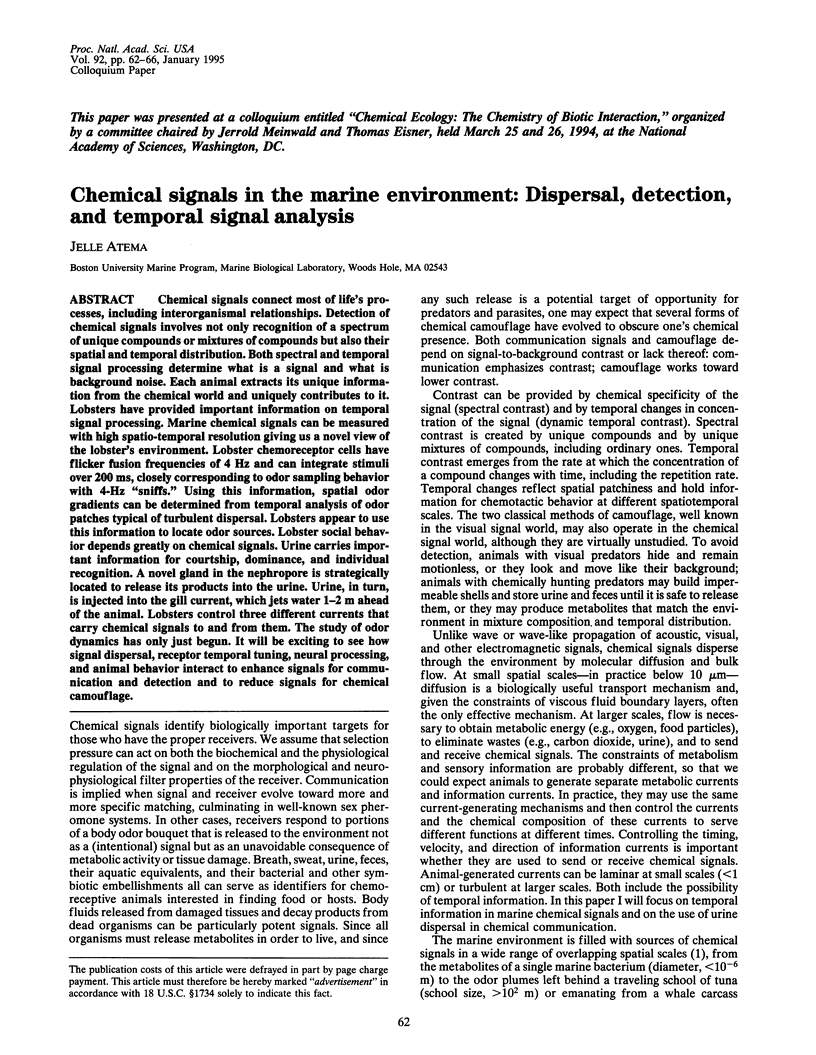
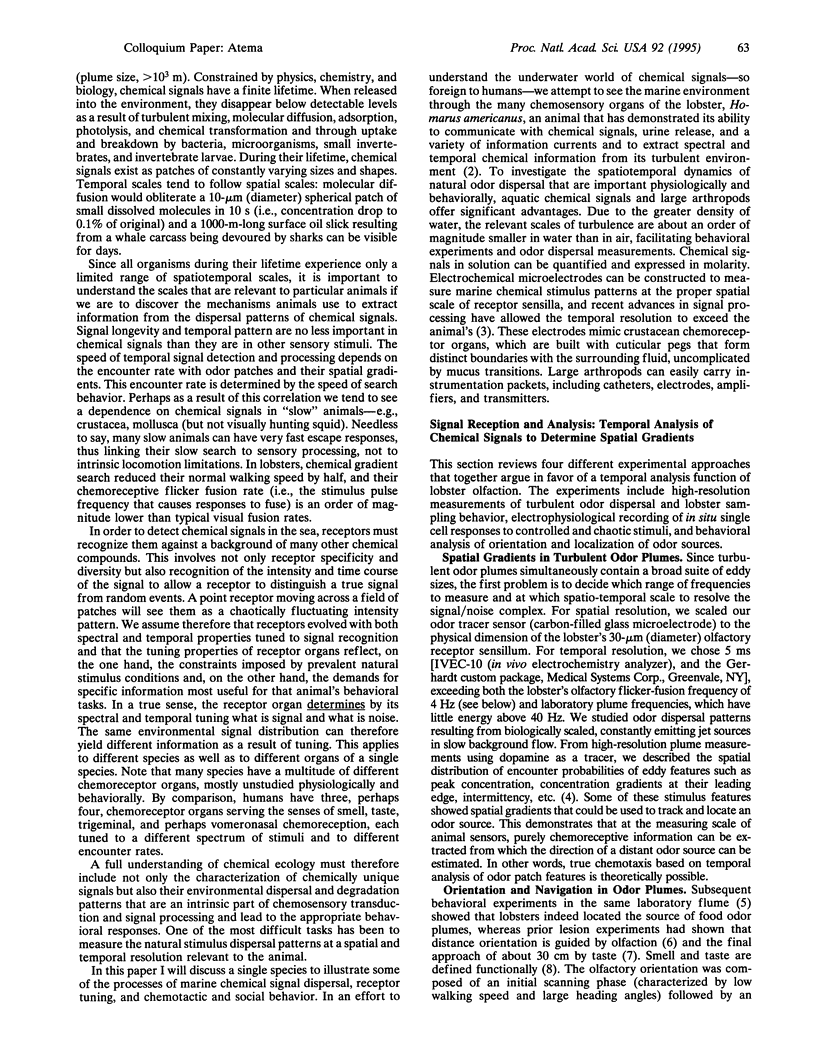
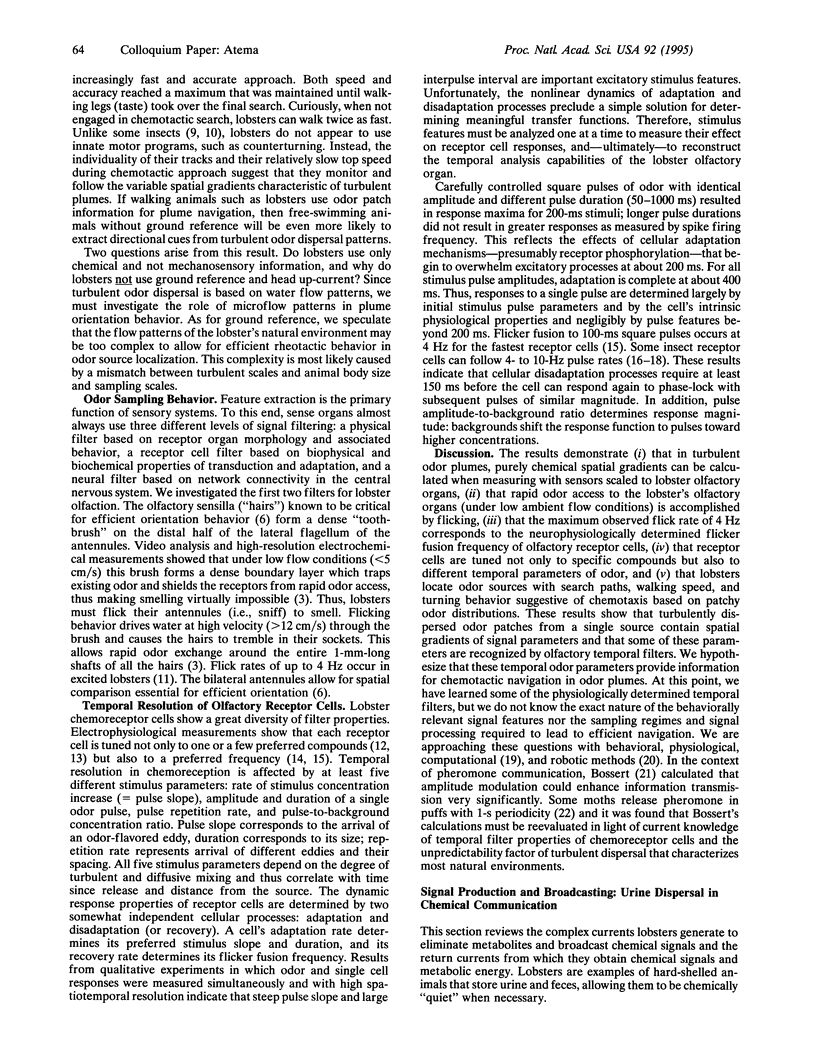
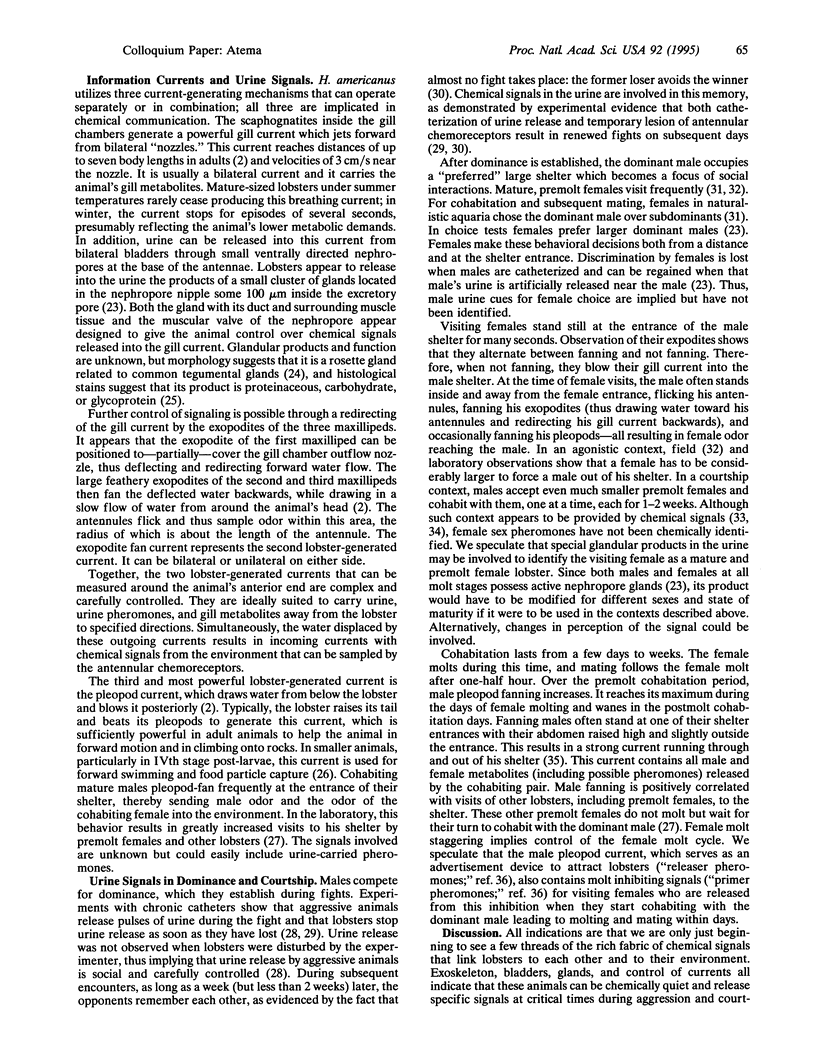
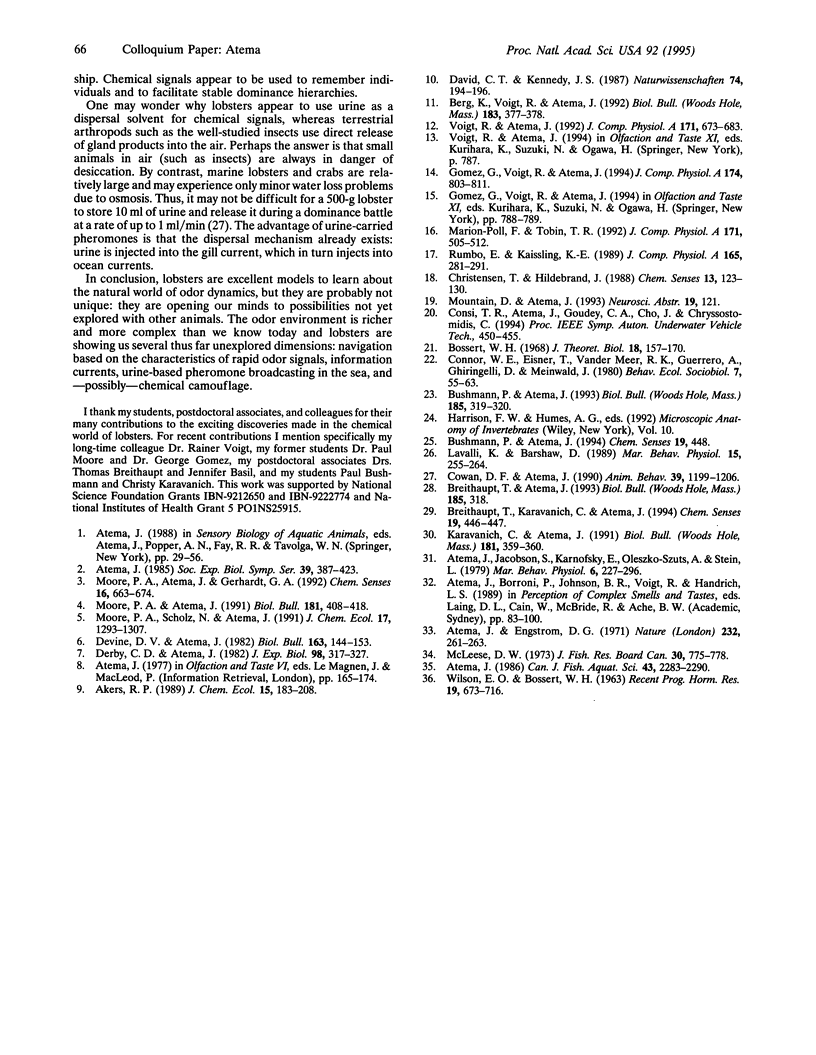
Selected References
These references are in PubMed. This may not be the complete list of references from this article.
- Atema J. Chemoreception in the sea: adaptations of chemoreceptors and behaviour to aquatic stimulus conditions. Symp Soc Exp Biol. 1985;39:387–423. [PubMed] [Google Scholar]
- Atema J., Engstrom D. G. Sex pheromone in the lobster, Homarus americanus. Nature. 1971 Jul 23;232(5308):261–263. doi: 10.1038/232261a0. [DOI] [PubMed] [Google Scholar]
- Bossert W. H. Temporal patterning in olfactory communication. J Theor Biol. 1968 Feb;18(2):157–170. doi: 10.1016/0022-5193(68)90158-6. [DOI] [PubMed] [Google Scholar]
- Marion-Poll F., Tobin T. R. Temporal coding of pheromone pulses and trains in Manduca sexta. J Comp Physiol A. 1992 Nov;171(4):505–512. doi: 10.1007/BF00194583. [DOI] [PubMed] [Google Scholar]
- WILSON E. O., BOSSERT W. H. CHEMICAL COMMUNICATION AMONG ANIMALS. Recent Prog Horm Res. 1963;19:673–716. [PubMed] [Google Scholar]


